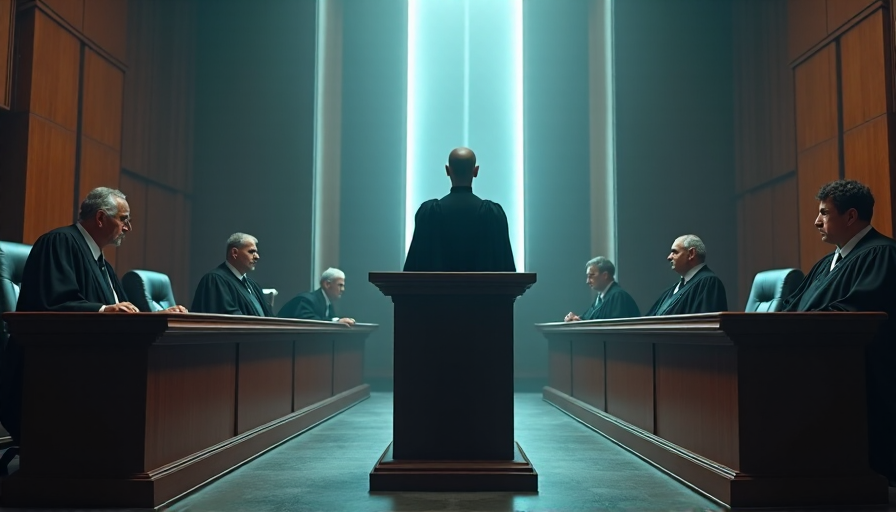
AI Avatar Skirts Legal Boundaries: A Startup's Bold Gamble in the Courtroom
A Surprising Turn in Legal Proceedings
In a courtroom scenario that reads like a scene from a sci-fi drama, Jerome Dewald, an AI entrepreneur and founder of a legal-tech startup, attempted to represent himself using an artificially generated digital avatar. Dewald, embroiled in an employment dispute with the insurance firm MassMutual Metro New York, had arranged for a computer-generated image to deliver his argument during a hearing at the US state’s supreme court appellate division on March 26.
During the oral arguments, Dewald played a video that featured a digitally crafted figure appearing to represent him. The video began with the avatar politely stating, "Now may it please the court, I come here today a humble pro se before a panel of five distinguished justices…" however, the unexpected use of a technology-driven persona quickly turned perplexing.
The Court’s Reaction and a Lesson in Transparency
Associate Justice Sallie Manzanet-Daniels was among the first to notice the discrepancy. When the video played, she immediately inquired, "Is that counsel for the case?" Dewald responded bluntly, "I generated that," clarifying that the speaker was not a real person. The judge’s frustration was palpable as she admonished him for not being transparent during the application process. "It would have been nice to know that when you made your application," she snapped, emphasizing that courtroom procedures should remain clear even in the era of AI.
This incident strikes at the heart of a larger debate: when is the integration of artificial intelligence into legal proceedings innovative, and when does it cross the line into misleading theatrics?
Behind the Digital Persona: Challenges and Constraints
Crafting an AI Replica
Dewald, who runs the startup Pro Se Pro aiming to empower unrepresented litigants, intended to use an AI service called Tavus to create a lifelike avatar. For the digital replication process, the service requires a two-to-four-minute video of the user speaking along with a one-minute segment of them standing still. The technology, however, posed its own hurdles. Despite having permission to use this digital representation due to his past struggles with extended speech (a remnant of a throat cancer battle 25 years ago), the custom avatar never fully materialized. Instead, Dewald ended up using a default stock avatar, known as "Jim," whose brief appearance was cut abruptly by the judge.
A Cautionary Tale or a Glimpse into the Future?
The judge’s stern reaction was not merely a rebuke of Dewald’s method—it also underscored a broader skepticism toward AI in traditional institutions. Dewald later explained in an interview that while the court had consented to his video presentation, they were unprepared for an artificially generated image to argue a case. His explanation hinted at the rapid evolution of technology, remarking, "In the artificial intelligence world, a year is like an eon." The rapid pace of change has left many traditional legal processes scrambling to adapt.
The Larger Debate: AI in the Courtroom
The incident has ignited discussions on whether AI should play a role in courtroom arguments. Dewald contends that his pioneering efforts were intended not as a business promotion but as an innovative way to empower pro se litigants, who often struggle to navigate the complexities of the legal system without professional representation.
During a recent panel discussion involving New York justices, guidelines suggested that any AI involvement should be fully disclosed to all parties. Dewald admitted that although he did secure permission for his video presentation, his reliance on a default avatar due to technical constraints might not have been the best decision.
He further remarked that while AI tools—often criticized for hallucinations or inaccurate data—can grant a voice to those who usually remain voiceless in the courtroom, they also demand strict oversight and transparency.
Where Does This Leave the Future of Lawyer-Bots?
As Dewald continues to experiment with AI in legal applications, his experience serves as both a warning and a beacon of potential. Despite the short-lived cameo of his digital persona and the judge's sharp reprimand, the conversation about the responsible integration of AI in legal processes is far from over. Proponents argue that AI could empower unrepresented litigants, while skeptics are quick to point out the dangers of misplaced trust in automated narratives.
This case might become a milestone—a reminder that transparency, accountability, and adaptability are essential when merging digital innovation with traditional legal proceedings.
The drama in the courtroom encapsulates the evolving challenges at the intersection of AI and law, suggesting that as technology advances, legal infrastructures must be ready to respond to new, sometimes unexpected, developments.
Note: This publication was rewritten using AI. The content was based on the original source linked above.